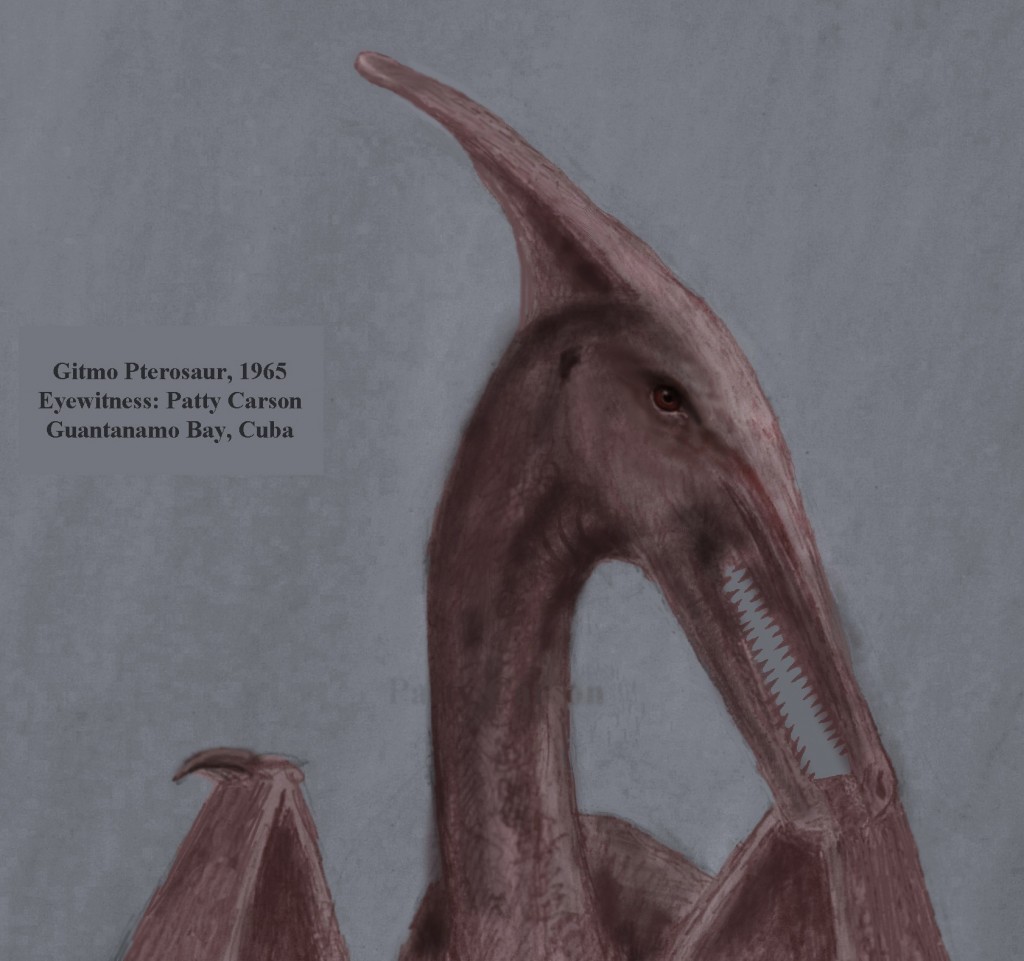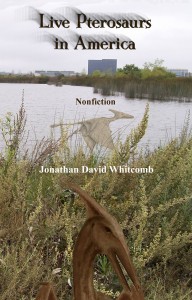A new press release mentions four eyewitnesses of possible pterosaurs at Guantanamo Bay, Cuba, in the mid-twentieth century. Two of them have been mentioned before on this blog: Eskin Kuhn and Patty Carson.
In February of 2010, Whitcomb gave Eskin C. Kuhn (living in Ohio) a surprise phone call, questioning him about his report of two creatures he had seen flying over the U. S. military base at Guantanamo Bay, Cuba, in 1971. . . . Whitcomb became convinced, before the end of their conversation, that Kuhn was telling the truth. . . .
Two large long-tailed flying creatures, apparent pterosaurs, caught the Marine’s attention. He later reported that they were “flying together at low altitude, perhaps 100 feet, very close in range from where I was standing, so that I had a perfectly clear view of them.” He noticed that the “structure and the texture of the wings appeared to be very similar to that of bats . . .” He had no idea that anybody else had seen such a creature. . . .
In April of 2011, Whitcomb began email and phone conversations with Patty Carson, of Riverside, California, who had lived as a child at the military installation at Guantanamo Bay, Cuba, in 1965. . . . She told Whitcomb, “We were walking through that scrub area, and suddenly it sat up . . . All of us froze for about five seconds, then it leaned to its left and took off with a fwap fwap fwap sound . . . It did have a tail and it had a diamond shaped tip . . . The skin was a leathery, brownish reddish color. It had little teeth, a LOT of them.”
The other two eyewitnesses in Cuba, Tom Carson (brother of Patty) and an anonymous eyewitness, had less-clear views, although Tom did mention that the flying creature he saw had a tail like that of a shaved tail of a dog.
This lady has seen the sketch by Eskin Kuhn and she told me it is very close to the appearance of what she had seen; she told me that she would not make any major change to that sketch other than shortening the tail slightly and lengthening the wings slightly and making the head slightly curved.





